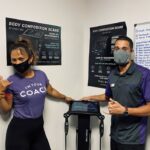
1. Subcutaneous Fat
The first metric on the list is subcutaneous fat. Although it is an important part of the body for regulating temperature and storing energy, having excess of it could increase your risk for cardiovascular diseases, liver and kidney complications and type 2 diabetes.
2. Visceral Fat
Visceral fat is sometimes called “active fat” as it causes inflammation and can actively increase the chances of being exposed to severe health problems. It could also cause difficulty in losing weight, heart diseases and even cognitive decline.
3. Total Body Fat Mass
This metric measures the actual weight of fat inside the body, including both the subcutaneous and visceral fat. This is computed by subtracting lean body mass from the overall weight.
4. Total Body Fat Percentage
Total body fat percentage refers to how much of the body weight it is made up of fat. Having a lower body fat percentage means the percentage of lean muscle mass in your body is higher. Ideally, the healthy body fat percentage for adult men ranges from about 10 to 25% and about 20 to 35% for adult women. This, however, could vary from person to person and isn’t always an accurate representation of body fat.
5. Segmental Fat Mass
Segmental fat mass refers to the amount of fat that is distributed throughout five body parts -the left and right arms, the left and right legs, and the trunk. The numbers represented by this metric can help you track fat loss better in specific body parts as compared to the total body fat percentage, as it takes some time before visual changes.
For more information on the Evolt 360 body scanner and to find your closest scanner location, download the Evolt Active app.

